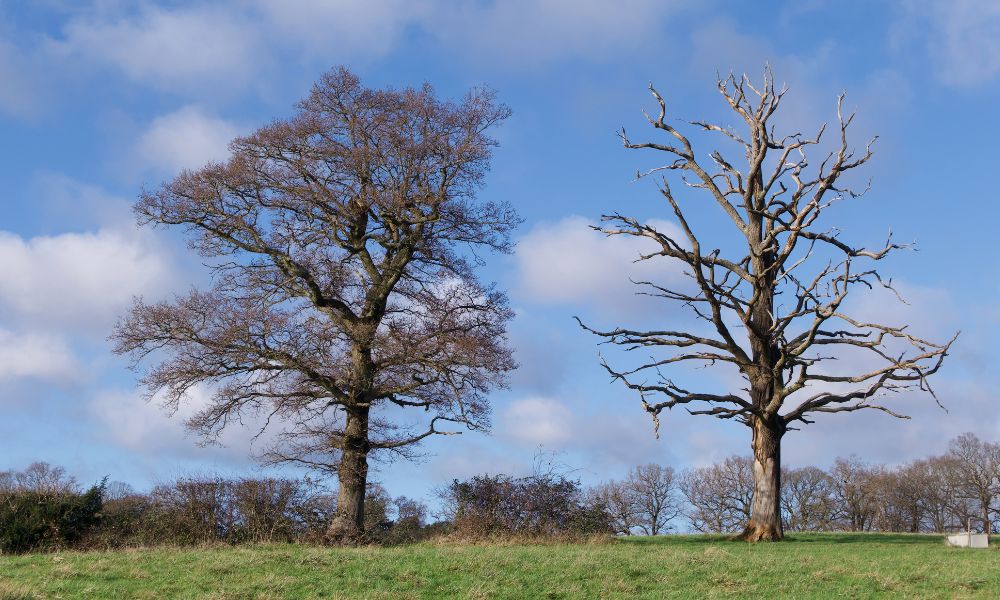Dead, decaying, and pest-infested trees can pose a significant threat to both people and property. And while the dangers are very real, the signs of a problematic tree aren’t always so obvious. Read on to learn how to spot a potentially dangerous tree on your property or during a jaunt through the woods.
Uneven Growth
Trees exhibiting uneven growth, wherein one side has a heavier concentration of branches and leaves, possess a higher risk of instability. This is called an unbalanced crown, and trees with this problem are more susceptible to falling, potentially causing significant damage to anything beneath it. While an unbalanced tree does not inherently pose a danger, the risk amplifies if the tree contracts a disease or encounters a strong storm. The additional weight or stress from these factors can compromise the tree’s stability, elevating the potential for harm. Monitoring such trees closely and taking preventative measures when necessary is crucial.
Widow-Maker Branches
Widow-makers are dead branches that are caught in tree canopies and could fall at any moment without announcing the fall with a snapping or cracking sound. The absence of a snapping sound, which usually signals a branch’s impending fall, increases the risk of injury or property damage, as people may not have sufficient warning to move out of the way.
Spotting these branches before they become potentially dangerous falling projectiles isn’t so simple, but a few signs indicate widow-makers in the canopy above. First, if you notice many fallen and dead branches beneath your tree, inspect them for a light-colored interior or signs of rot. Once you identify the fallen branches as widow-makers, hire a professional to remove any loose branches in the tree canopy safely.
Learning to spot widow-makers in the wilderness is a vital camping and hiking skill. Never set up your campsite underneath a tree with many fallen branches and a high-up canopy.
Decayed or Damaged Bark
Damaged or decayed bark often manifests as discolored patches, deep cracks, or areas where the bark is missing entirely, revealing the inner wood of the tree. This damage can signify the tree is suffering from a disease, pest infestation, or physical trauma. The bark of a tree serves as its protective shield, safeguarding it from external threats, such as harsh weather conditions and pests. When this shield is compromised, it exposes the tree to these threats, weakening its overall health and stability. Over time, severe damage or decay can lead to the death of the tree. A tree with damaged or decayed bark poses a hazard, as it becomes more susceptible to falling, especially under strong winds or heavy snowfall. This can result in significant property damage or personal injury. Noticing a decaying or damaged tree is one of the great reasons to call for emergency tree services.
Knowing how to spot a potentially dangerous tree in your yard or while out on a trek is an essential skill that can save loads of money and even lives! Look out for these signs throughout your property or favorite hiking trail to stay safe and comfortable while outdoors.


